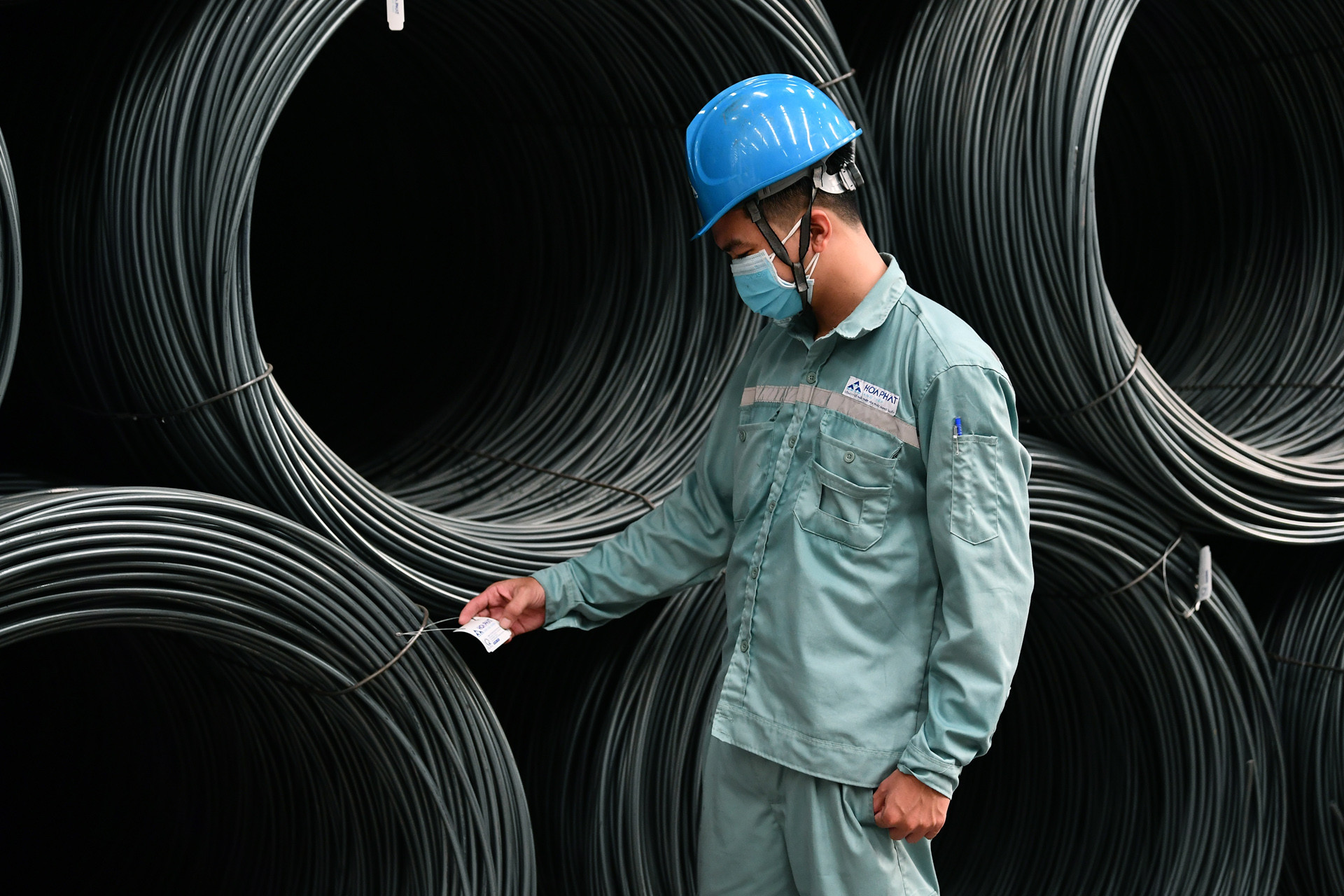
With the encouraging growth rate in the first half of the year, the government believes the growth rate for 2024 will be 6.5-7 percent, higher than the 6-6.5 percent set by the National Assembly.
The economic recovery in 2022-2023 was gained thanks to high growth rates of the service sector (10 percent in 2022, 6.82 percent in 2023 and 6.64 percent in the first six months 2024).
Also, industrial production and construction strongly recovered in the third quarter of 2023. The industrial production sector's added-value growth rate reached 6.86 percent in the fourth quarter of 2023 and 7 percent in the first six months of 2024, or higher than the GDP growth rates in the same period.
The growth rate was attributed to the strong development of the service sector and industrial production in the last three quarters.
The agriculture, forestry and fisheries sector also made a great contribution to high growth. In 2014-2019, the average annual growth rate of the sector was 2.67 percent. During the pandemic (2021-2022), the figure was 2.98 percent, and in 2023-June 2024, it was 3.38 percent. The figures show the increasing contribution of the sector to the national economy.
Unusual economic trends
There are some unusual trends related to economic indicators in their direct relationship with GDP growth.
First, regarding the relationship between the IIP (Index of Industrial Production) and industrial value added (VA), the IIP growth rate is always higher than industrial VA.
In 2016-2019, the average annual IIP and VA growth rates were 9.05 percent and 8.14 percent, respectively. In Covid-19 years, 2020-2021, the figures were 4.1 percent and 3.92 percent, respectively, and in 2022, they were 7.8 percent and 7.69 percent.
However, in 2023, the IIP growth rate unexpectedly dropped to just half of the VA growth rate (1.5 vs 3.02 percent). In the first quarter of 2024, the IIP growth rate continued to be lower than VA (5.9 vs 6.47 percent). In the second quarter, the relationship returned to normal (9.5 vs 8.55 percent).
Second, regarding the growth of the service sector, the VA growth rate based on 2010 comparable prices is lower than the revenue growth rate excluding price fluctuations, and lower than the service revenue growth rate based on current prices.
In 2020, the growth rates of the service sector were 2.34 percent (VA growth rate in accordance with 2010 comparable prices), -1.2 percent (revenue growth rate excluding price fluctuations) and 2.6 percent (revenue growth rate in accordance with current prices).
In 2021, the figures were 1.22 percent, -6.2 percent and -3.8 percent. As such, during the pandemic, the VA growth rate of the service sector in accordance with 2010 comparable prices was higher than the revenue growth rate in accordance with current prices and revenue excluding price fluctuations.
In 2022-2023, the growth of the service sector returned to normal. In 2022, the VA in accordance with comparable prices increased by 10 percent, revenue in accordance with current prices increased by 19.6 percent, and revenue excluding price fluctuations 15.6 percent.
In 2023, the growth rates were 6.82 percent, 9.6 percent and 7.1 percent, respectively.
However, the relationship became unusual again in the first six months of 2024. In the first quarter, the VA of the service sector grew 6.2 percent, higher than revenue excluding price fluctuations (5.1 percent). In the first half of 2024, the figures were 6.64 percent and 5.7 percent, respectively.
As such, after the VA in industrial production became abnormally high (IIP growth rate was low in 2023 and the first quarter of 2024), the VA increased abnormally.
In addition, the recent growth rate of the agriculture, forestry and fisheries sector is significantly higher than previously. These unusual trends occur when the national economy is in difficult period, and the economic growth rate is not as high as expected.
Nguyen Dinh Cung